[103rd Cruise Report]호버트(태즈매니아)기항 ~태즈매니아 원시림 산책과 삼림보호에 대해 배우다~(1편)
1/24
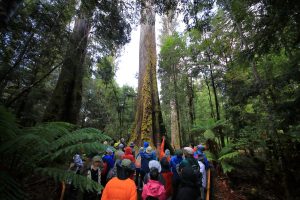
호주 남동쪽에 떠 있는 태즈매니아 섬에 기항한 오션드림호. 오늘은 기항지 옵션 투어 '태즈매니아의 원시림 산책과 삼림보호에 배우다'에 참가했습니다. 섬의 약 45%가 국립공원이나 자연보호구역으로 지정되어 있는 태즈매니아섬. 풍부한 자연으로 알려진 땅이지만, 희귀한 원시림은 벌목으로 인한 위기에 처해 있습니다. 실제로 벌목 현장은 어떤 모습일까요? 그리고 태즈매니아의 원시림은 어떤 곳일까요? 원시림의 현재와 미래를 생각해 보는 투어입니다.
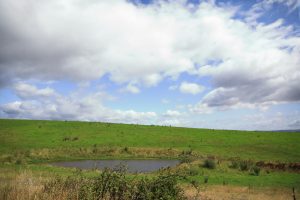
버스를 타고 약 2시간 이동하여 벌목 현장으로 알려진 스틱스 계곡으로 향했습니다. 창밖에는 태즈매니아의 평화로운 풍경이 펼쳐집니다.
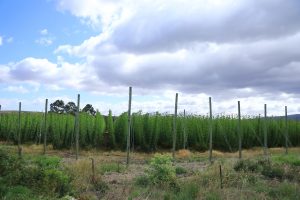
믹주의 재료가 되는 '홉'이 재배되는 모습도 볼 수 있었습니다.
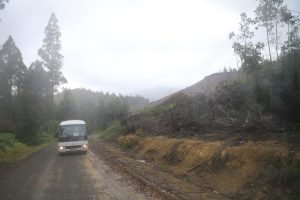
버스는 도중에 포장 도로에서 벗어나 자갈길로 들어섰습니다. 산을 오를수록 조금씩 안개가 끼고, 안개는 비로 바뀌어 갑니다. 흐린 차창을 닦아 바깥 풍경을 보니 아까와는 다른 모습. 한 눈에 보기에도 이상한 경치였지요.
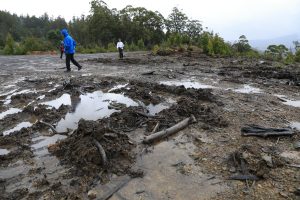
몇 분을 더 달려 스틱스 계곡에 도착. 차에서 내리자 충격적인 풍경이... 누가 보더라도 이곳에서 벌목이 진행되고 있다는 것을 알 수 있을 만한 장소에 발을 내딛었습니다. 이곳에 원래 숲이 있었다는 것을 상상하기 힘든 모습이었습니다.
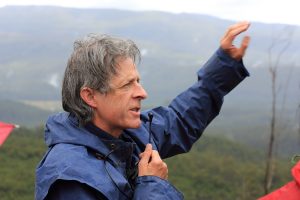
먼저 이곳의 WST(The Wilderness Society Tasmania)라는 단체의 데이비드 씨의 이야기를 들어보았습니다.
(*WST: 1979년 태즈매니아 주도 호버트에서 설립된 NGO. 현재 호주 전국에서 자연보호 및 원시림 벌목 반대 운동을 펼치고 있는 단체.)
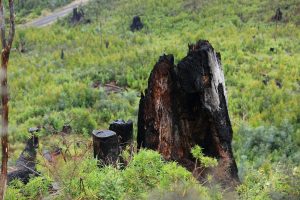
"이곳은 벌목된 지 2년 정도 지났습니다. 삼림 재생을 위해서 한 번 불로 태웠지만, 태우는 행위 자체가 대기중에 탄소를 배출하기 때문에 환경에는 좋지 않습니다. 아마 100년 쯤 뒤에 다시 벌목되겠지요." 그 말을 듣고 보니 정말 타다 남은 나무들이 눈에 띕니다.
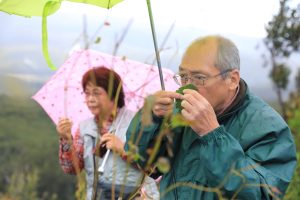
"이 원시림은 절대 원래 상태로 돌아갈 수 없어요. 만약 돌아간다고 해도 400년은 걸리죠. 원래 이곳은 재생을 위해서(100년 후 벌목을 위해서) 온통 유칼리나무만 심어지고 있습니다. 그렇게 되면 원시림이 아니게 될 뿐더러 생태계도 무너지고 맙니다." 데이비드 씨는 우리에게 자라난 풀잎의 향기를 맡아보라고 했습니다. 유칼리의 독특한 향을 느낄 수 있었지요. 충격적인 현실을 마주하고 모두 할 말을 잃은 듯했습니다.
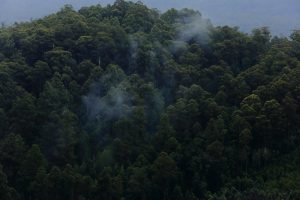
벌목지를 뒤로 하고 '빅트리 보호림'으로 이동했습니다. 태즈매니아의 세걔유산으로 지정된 이 원시림은 자연 카테고리의 4항목 전체를 충족하는 세계 유일의 세계유산입니다.
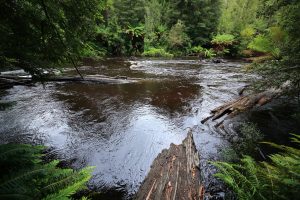
이동 도중 스틱스 강에 접어들었습니다. 유칼리툽스의 유분이 흘러든 탓에 강의 색이 이렇게 까맣다고 합니다. 최근에는 비가 어서 유량도 줄어들었다고 하는데, 데이비드 씨는 오늘 강의 모습을 보고 조금은 안심한 듯했답니다.
